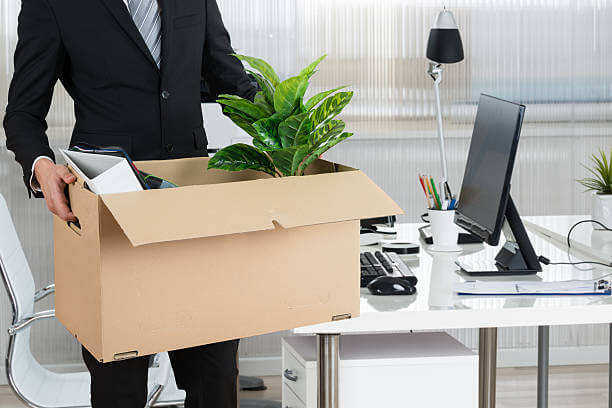
Moving is a stressful ordeal, to begin with. The entire process can take months and is dominated by administrative procedures, which can drag on for a long time and make the process even more tense. Worst of all is the packing and moving aspect, which can be taxing on its own.
Read below to learn some packing and moving hacks to help you along the journey to your new home in the easiest, most stress-free way possible, as well as how to pack for a move efficiently.

How to pack for moving – Some general tips
How to pack for moving – Some general tips
Get your moving supplies together
Your first port-of-call is to get packing supplies together, and the most important is your moving boxes. You will want to look for boxes that are strong and made from corrugated cardboard, with lids or covers.
You will also need packaging materials that cushion your items, such as newspaper, packing peanuts, and bubble wrap. Take special care when using newspaper, as the ink transfers and may stain clothing or other items. It is also a good idea to use corrugated paper (which can be purchased in rolls) to wrap delicate items such as figurines.
It is important to rent a dolly during your packing, as well as for your unpacking. Carrying boxes around your home can become fatiguing, and leave you open to injuries or to dropping boxes and damaging items therein. Renting a dolly eliminates these problems and makes the moving process much easier.
Other essentials include gummed tape or packing tape (don’t use masking tape), twine for sealing boxes, labels and markers, scissors, and a notebook to create a log for all your boxes.
At Jordan River Moving, we can supply you with all the moving supplies you need, including specialized cartons specifically for household items such as mattresses and mirrors. Contact us to see how we can help.
Pack an essentials box
Items that you will need during transit and travel should go in this box. Things such as small tools (screwdriver and hammer), food and drinks, a change of clothes, toiletries, medications, and a first-aid kit are among some of the things you should keep on hand for quick access during your travel.
Pack your boxes efficiently
Begin by packing your boxes with a layer of padding, such as bubble wrap, or even household items such as blankets or towels. The heaviest items should go into the box first, to avoid heavy items being on top of light items, which could cause breakage.
It is also important to not fill boxes to the brim. Making sure that this doesn’t happen ensures that boxes don’t get too heavy and reduces the chances that the boxes are dropped or broken during transit.
Have a plan before packing
The first thing is first, pack one room at a time. This is to avoid confusion and to make things easier to record in your box logbook. Logging each and every box that is packed per room is much easier when you pack one room at a time and leaves little room for error.
It is also very important to secure the bottom of your boxes very well before packing them, to ensure the boxes don’t break and the contents don’t fall out.
It is important that you plan how to pack for moving well in advance, to ensure that no items are left behind and that everything is accounted for.
Useful tips per room
Here are some handy tips to make use of when packing each room of your home.
Kitchen
Before packing up your refrigerator, you should defrost it at least 48 hours before you move out. It is also a good idea to wipe it down so that no bad smells develop.
Your dishes and glassware can be easily packed if they are adequately cushioned with bubble wrap and have additional cushioning at the bottom of their cartons. Don’t overpack the boxes that contain your dishes and glassware, as it becomes harder to move the boxes and more likely to cause damage.
It is also a good idea to remove small components such as blades or other loose pieces from appliances before packing them. Taping them to the appliance makes it easier to find the parts when you unpack.
Dining room
Your rug can be rolled up for easy transportation, just be sure to secure it with rope or plastic.
Chairs should be disassembled and packed in boxes with all bolts and fasteners in labeled plastic bags.
You can secure your dining room table by covering the surface with a blanket to prevent scratches.
Living room/Den
Your electronics, such as your TV, should be well-secured. If possible, they should be packed in the boxes they came in, and if not, they should be double-packed in cartons with ample cushioning around them. Screens can be secured with a blanket. All screws, cables, remote controls, and other accessories should be taped to the back of your TV for easy retrieval.
Furniture such as sofas and chairs should be packed into the moving truck before your boxes, as they are much heavier. It may also be a good idea to remove legs and armrests so that it is easier to maneuver these items into your new home and through doorways.
Artwork and mirrors should be secured in the same way as fragile screens – with plenty of cushioning and a blanket for added protection.
Bulbs should be removed from lampshades, and lampshades and bases should be cushioned carefully.
Lastly, books, CDs, and other media should be in separate boxes. Again, take special care (especially with books) to not overpack boxes and make them too heavy, as the boxes have a chance of breaking.
Bedrooms
Clothing can be folded and placed into moving boxes, but for more formal attire, it might be advantageous to buy a wardrobe box that allows you to keep clothes hanging during transport.
Valuables such as jewelry and important documents should be organized well. Jewelry should be kept on your person during the move. If you have many important documents, it is a good idea to get a lockable file box to keep these safe during transit.
Mattresses can be packed in specialized bed bags or cartons that protect them from dust and dirt during transit.
Bathrooms
Your bathroom will likely be the first room you unpack in your new home, so it is important to have quick access to all the things that belong in your bathroom when you first unpack the moving truck.
Toiletries should be kept together for easy and quick access when it comes time to unpack.
Laundry room
Appliances such as your washer and dryer should be disconnected from power, and dryer vents and washer hoses should be disconnected and taped to the appliance for easy retrieval, together with their respective power cords.
Detergents and softeners should be disposed of, as these are dangerous to transport.
Laundry hampers can also be used to move extra clothing.
Garage/Shed
Hazardous chemicals such as fertilizer, weed killer, or paint should be disposed of, as these are dangerous to transport.
Appliances that have gas, such as your grill or lawnmower, should be drained of their gas before transporting. Propane tanks, regardless of being full or empty, cannot be transported. It will be best to hand these tanks in and reacquire them when you have moved into your new home.
Tools should be stored in a tool chest for safety. Larger tools such as saws and hammers, can be wrapped in towels and placed in cartons so that they don’t damage anything.
FAQs
What about my frozen food?
As long as your food is at a normal freezer temperature at the time of loading, it can be put into cooler boxes and transported, provided it will arrive at its destination within 24 hours.
How to pack drapes and curtains?
Drapes and curtains can be hung over the crossbar inside a wardrobe carton, or folded into ordinary cartons.
How should a moving truck be packed?
As a general rule, the heaviest items (such as appliances and furniture) into the moving truck first and fix these down with fasteners. This ensures that the truck is also balanced and stable. Larger items can come after this before boxes are loaded.
Fragile, luxury and extremely valuable items should be transported in your personal vehicle to ensure that they are safe.




